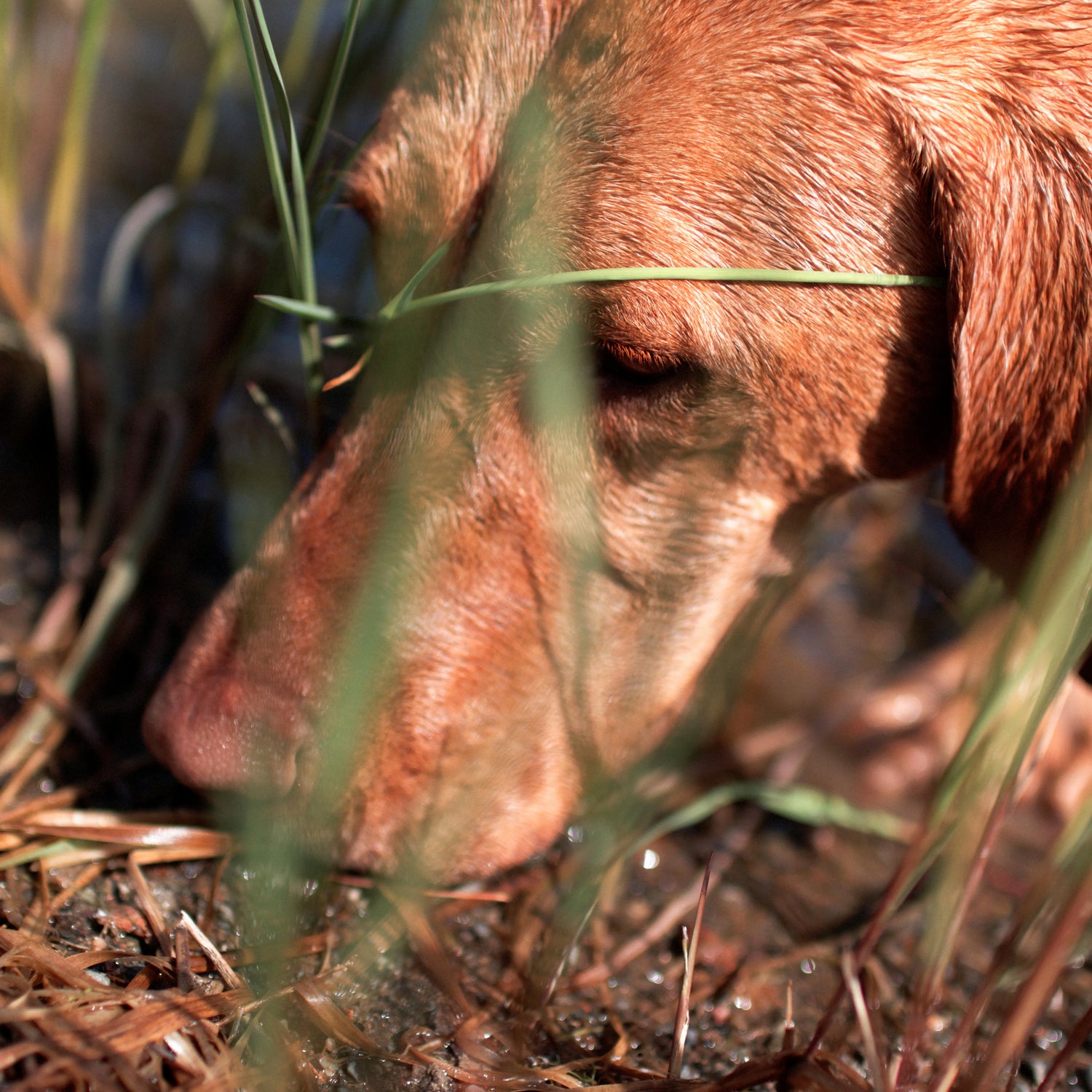One day in mid-March, Canyon Mansfield took his three-year-old yellow lab, Casey, on a walk into open scrubland behind his house in Pocatello, Idaho. It was the boy’s happy place. About 400 yards from his house, Mansfield bent down to inspect what looked like a sprinkler head sticking out of the dirt. When he touched the goop smeared on top of it, a stream of powder shot out. Some of it landed on Mansfield’s face and jacket, but a brisk wind sent most of the powder toward his dog.
The dog’s eyes quickly glassed over, he struggled to breathe as his mouth filled with red foam, and he started having what the boy describes as a seizure. In a manner of minutes, Casey stopped breathing. A short time later, when Mansfield’s father, a physician, arrived and wanted to try to resuscitate the dog, the boy yelled, “No, I think it’s poison.”
He was right. Casey died from chemical asphyxiation after inhaling sodium cyanide powder from the device, a baited trap called an M-44 that kills thousands of coyotes and red foxes each year in an effort to prevent livestock predation.
There are two ways that ranchers and Wildlife Services, an arm of the U.S. Department of Agriculture, control these predators that kill livestock every year. The first is nonlethal, which puts the onus on ranchers to use strategies like fencing, range riders, guardian dogs, and penning livestock to keep animals safe during calving. The other is lethal. Wildlife Services is often enlisted to carry out these lethal strategies, using M-44 traps, snares, footholds, or other traps, as well as shooting the animals—often from the air. Ranchers are not required to try nonlethal predator control before enlisting Wildlife Services to employ lethal methods, and money for the service is pulled from a complex mix of sources, including federal, state, county, and local governments and, through cooperative groups, ranchers themselves.
Every year, these traps kill hundreds of non-target animals, including black bears and, yes, a small number of family dogs and humans. , ten family pets were killed or euthanized after being caught in snares or traps set by Wildlife Services; six were killed by M-44s that same year. Spring is high season for predation, due to all those lambs and calves, so it’s also the time of year when Wildlife Services places more traps in the field. In March, the same month Casey died, a 15-year-old Deutsch Drahthaar and eight-year-old Weimaraner , as did a .
According to USDA spokesperson Andre Bell, 15 citizens have triggered the devices and suffered a range of illnesses as a result, including shortness of breath and a burning sensation in the eyes and mouth. Another 24 agency employees were also exposed while handling the device. No human has died from exposure, though a Utah man who triggered an M-44 on BLM land in 2003 after mistaking it for a survey stake claims that exposure triggered ongoing health problems, from his job.
The dog’s eyes quickly glassed over, he struggled to breathe as his mouth filled with red foam, and he started having what the boy describes as a seizure.
It’s time to ban these poisons from public lands. In early April, four conservation groups as part of their years-long effort to have M-44s, as well as another pesticide-based device called Compound 180, permanently banned. Congressman Peter DeFazio, a Democrat from Oregon, introduced a bill in late March that would also ban the poisons—something he’s been trying to do for decades. “The use of this device by Wildlife Services led to the death of an innocent wolf, has previously killed domestic dogs, and sooner or later, will kill a child,” he in March.
Not everyone is on board. Some argue that nonlethal methods aren’t as effective (though recent studies ) and that M-44s are more appropriate and cost-effective than other lethal means. John Shivik, a former Wildlife Services employee who focused on developing and improving nonlethal control practices, says M-44s are “relatively humane” compared to snares or leg-holds, which entrap and often injure an animal for many days before an agent returns.
Regardless of the outcome of the legislation and lawsuits, the tide seems to be turning against lethal methods as ranchers embrace more nonlethal methods. Utah State University and Wildlife Services recently completed a four-year study evaluating the effectiveness of certain guardian dog breeds—Kangals, Karakachans, and Cão de Gado Transmontanos—against wolves, compared to commonly used breeds. The findings are currently being analyzed. Montana’s Wildlife Services (the agency operates through state-based offices, with different policies in each state) is also to test the use of electric fences adorned with flags, called fladry, to keep coyotes and wolves away from livestock. Fladry can scare off predators by merely flapping in the wind, and the electric fence acts as a wrist-slap to braver animals.
Ranchers will never be stripped of their rights to eliminate wildlife they believe to be killing their stock in trade, and that includes shooting a wolf or coyote that’s harassing their flock. It’s about as likely as repealing the Second Amendment. But nonlethal experimentation appears to be working. According to a of sheep and lamb ranching operations, the number of sheep and lamb killed by predators on ranches in the West declined from 2009 to 2014, from 634,500 to 585,000. At the same time, the use of nonlethal controls increased. In 2004, only 31.9 percent of ranches used one or more nonlethal method to control predators, compared to 58 percent a decade later.
In response to Casey’s death and Mansfield’s near-miss, the agency placed a and directed agents to remove all of the devices that were deployed. Then, in mid-June, Wildlife Services announced an agencywide review of the devices as well as new rules that require more visible and obvious warning signs to be placed near M-44s.
It’s a start toward addressing what, at times, seemed to be a lax attitude toward these dangerous devices. Last year, Idaho’s Wildlife Services had already prohibited use of M-44s on all federal land in the state, hoping this would “reduce any anxiety that recreationists may feel” about cyanide traps hiding in their playgrounds. The WS-Idaho agent who set the trap screwed up, because the M-44 that killed Casey, as well as another nearby trap, were in fact on federal land. Plus, the Mansfield family asserts that there were no nearby signs cautioning passersby about the poisonous devices—an for using M-44s. “Nobody knew what [the M-44] was,” the boy . As the captain of the local county sheriff’s office told , “He’s very lucky to be alive.”


